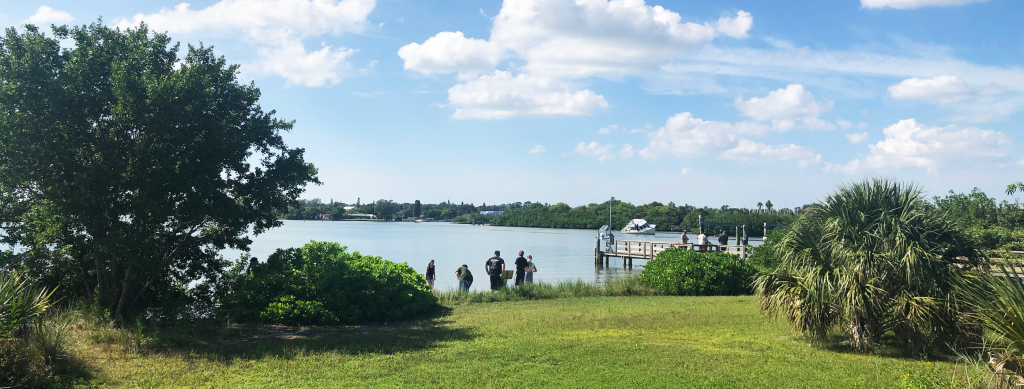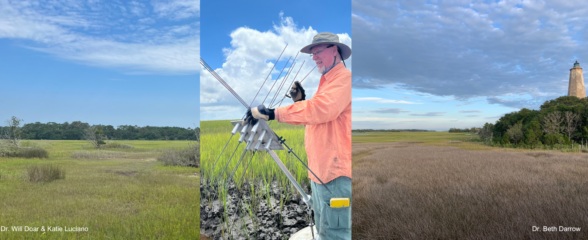
Pictured above is YSI Xylem representatives Brock Houston and Scott Wolf showing students the YSI Xylem EXO2 Multi-Parameter Water Quality Monitoring sonde.
On October 6th and 8th, undergraduate students from University of South Florida (USF) St. Petersburg environmental science lab made a field trip to the Clam Bayou water quality and meteorological station. The Clam Bayou station is operated through a partnership with YSI Xylem and the USF Coastal Ocean Monitoring Program.
During the tour, the students learned about the YSI Xylem EXO2 Multi-Parameter Water Quality Monitoring sonde from YSI Xylem representatives Brock Houston and Scott Wolf. The sonde measures salinity, dissolved oxygen, pH, water temperature, turbidity, chlorophyll, blue green algae, and fluorescent dissolved organic matter and depth. This water quality data augments the meteorological measurements from the same location which include air temperature, wind speed and gust, relative humidity, precipitation, and barometric pressure. Clam Bayou serves as a demonstration site highlighting the value of coastal environment data.

Students compared different methods for measuring water quality. The sonde provided an example of in situ autonomous water quality monitoring. The students then learned more traditional field sampling methods where they collected water and took the samples back to the lab for testing. Once testing is complete, they will compare their results to the sonde data.
Related news

Webinar: SECOORA Data Portal Demo
Join us on Thursday, February 20, 2025 at 1:00 PM ET to learn more about the SECOORA Data Portal and how to navigate it. Axiom Data Science will be providing an overview of the portal, including how to search the Catalog and make a custom data view.

Meet the Winners of the Surface Elevation Table (SET) Call for Proposals
SECOORA hosted a request for proposals for the installation of new Surface Elevation Table (SET) stations or the reactivation of historic SET stations within the Southeast region. This opportunity covers the cost of materials and supplies for the stations. Meet the winners here!

Meet the Winners of the 2024 Vembu Subramanian Ocean Scholars Award
Four winners were selected for the Vembu Subramanian Ocean Scholars Award, which is an annual funding opportunity to support students and early career professionals to present their research at a conference or meeting.